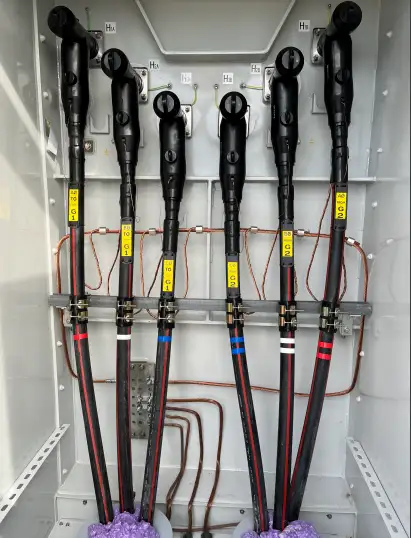Dielectric Fluids
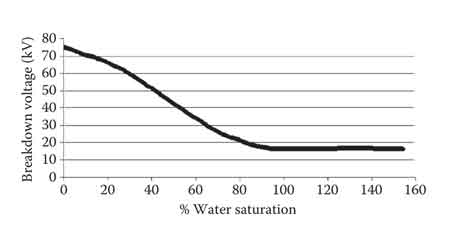
What is Breakdown Voltage of Oil?
The breakdown voltage (BDV) of oil refers to the point at which insulating oil loses its dielectric strength and begins to conduct electricity, potentially leading to failure in electrical systems. In systems like transformers, insulating oil plays a critical role in preventing electrical discharges by providing both insulation and cooling. A BDV test is essential for evaluating the quality and effectiveness of the oil. The higher the BDV, the better the oil can resist electrical breakdown, ensuring the safety and efficiency of the system.
What is the breakdown voltage of oil, and why is it important in electrical systems?
The breakdown voltage (BDV) of oil is the maximum voltage at which the insulating properties of the oil fail, causing it to conduct electricity. This is critical in systems like transformers, where transformer oil is used as an insulator. If the BDV of the oil is low, it can lead to electrical failures, short circuits, and equipment damage. Testing and maintaining the BDV ensures that the oil can effectively insulate electrical components and prevent catastrophic breakdowns.
How is the breakdown voltage of oil measured, and what are the typical test methods?
The breakdown voltage test is performed by placing an oil sample between two electrodes immersed in the oil at a specific distance, known as the specific gap. A gradually increasing voltage is applied until the oil fails and allows current to flow between the electrodes. The voltage at which this occurs is recorded as the BDV. This test is crucial in assessing the dielectric strength of the oil. The BDV test is typically conducted according to industry standards to ensure accurate and reliable results.
What factors affect the breakdown voltage of insulating oil?
Several factors can affect the breakdown voltage of insulating oil. Conducting impurities, such as moisture, dust, and other contaminants, can significantly lower the BDV of the oil. Over time, oil exposed to high temperatures, oxidation, and electrical stress can degrade, reducing its dielectric properties. Additionally, the presence of gases dissolved in the oil, as well as the condition of the oil's molecular structure, can affect its ability to insulate. Proper maintenance and regular testing help ensure that these factors are kept in check.
What are the typical breakdown voltage values for transformer oil?
The typical breakdown voltage values for transformer oil range from 30 kV to 60 kV, depending on the quality of the oil and its use in the transformer. New transformer oil generally has a higher BDV, while older, degraded oil can have a significantly lower value. Industry standards set minimum acceptable BDV values to ensure that the oil can maintain its insulating properties under operating conditions. Regular testing is necessary to monitor the oil’s performance and ensure it meets the required specifications.
How can the breakdown voltage of oil be improved or maintained?
Maintaining and improving the breakdown voltage of insulating oil involves regular testing and filtration. Removing conducting impurities such as moisture and dissolved gases can help increase the BDV. Proper storage and handling of the oil are also critical in preventing contamination. In some cases, reconditioning the oil by removing contaminants and restoring its dielectric properties can extend its useful life. Periodic BDV tests ensure that the oil continues to meet the necessary dielectric standards, safeguarding the electrical system from potential failure.
The breakdown voltage (BDV) of oil is a key parameter in maintaining the safety and efficiency of electrical equipment, particularly in transformers. By regularly testing and ensuring that the oil retains its dielectric strength, engineers can prevent costly electrical failures and extend the lifespan of the equipment. Proper maintenance and testing of transformer oil through BDV tests are essential to keeping systems operating safely and effectively.
Download Our FREE Dielectric Fluids Handbook
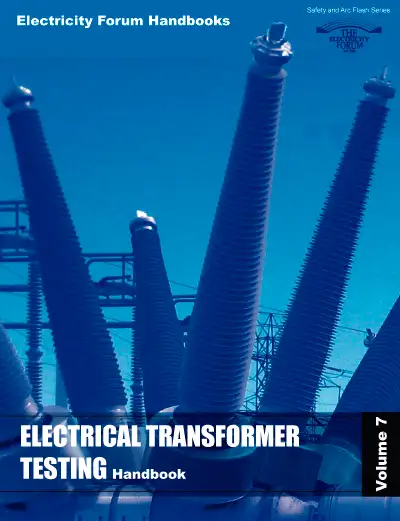
In this latest volume, we delve deep into the evolving field of transformer testing, focusing on advanced methods, technologies, and best practices essential for ensuring the optimal performance and longevity of electrical transformers. As transformers remain a critical component of power transmission and distribution systems, accurate testing is paramount to maintain the integrity of the electrical grid and prevent costly failures.
This handbook offers a comprehensive guide to the latest transformer testing techniques, from traditional diagnostic tests to cutting-edge technologies such as partial discharge monitoring, oil analysis, and advanced condition-based testing methods. We also explore the growing role of digitalization and real-time data analytics in transforming transformer testing, enabling utilities to detect potential issues before they lead to system outages.
Through expert insights, case studies, and step-by-step testing procedures, Volume 7 equips engineers, utilities, and industry professionals with the knowledge and tools to conduct thorough and effective transformer testing. Whether you’re focused on routine maintenance, failure prevention, or asset management, this volume is an invaluable resource for ensuring your transformers continue to operate safely and efficiently in today’s increasingly complex energy landscape.
Latest Dielectric Fluids Articles
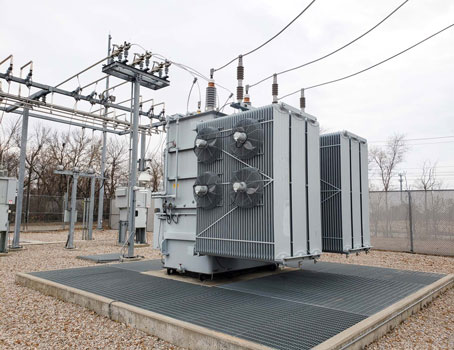
Oil For Transformers - Efficient Operation
Oil for transformers acts as a vital dielectric fluid, providing insulation, cooling, and arc suppression. By reducing heat buildup and protecting internal components, high-quality transformer oil ensures safe, efficient, and long-lasting performance in distribution systems.
What is Oil for Transformers?
Oil for transformers is a specialized insulating and cooling medium used in electrical transformers. It ensures safe, efficient, and long-lasting operation.
✅ Provides electrical insulation between windings and core
✅ Dissipates heat to prevent overheating and equipment failure
✅ Suppresses arcing and prolongs unit service life
Electrical Transformer Maintenance Training
Substation Maintenance Training
Request a Free Training Quotation
Oil for transformers plays a critical role as a dielectric fluid, ensuring the safe and efficient operation of electrical transformers. The type of fluid used maintains the integrity of both paper insulation and solid insulation, ensuring efficient performance in fluid-filled electrical systems. As an insulating medium, it not only prevents electrical breakdown but also helps in cooling the equipment by dissipating the heat generated during operation. Equipment liquid, typically mineral-based or synthetic, is designed to offer excellent electrical insulation properties, enhance operational longevity, and protect against faults or failures. This fluid is essential for maintaining the equipment’s performance, safeguarding against short circuits, and improving overall system reliability. In this article, we’ll explore the importance of liquid in equipment, its types, and why it's crucial for both electrical safety and efficiency. Utilities rely on distribution transformers filled with high-quality oil to ensure reliable service across neighborhoods and industrial facilities.
Transformer Oil Comparison Table
| Oil Type | Key Features | Advantages | Limitations |
|---|---|---|---|
| Mineral Oil | Petroleum-based dielectric fluid | Cost-effective, excellent cooling performance | Flammable, environmentally harmful, prone to aging |
| Silicone Oil | Synthetic, thermally stable | Fire-resistant, high flash point, long lifespan | Expensive, limited biodegradability |
| Synthetic Ester | Man-made ester-based fluid | Biodegradable, high fire safety, stable at high temperatures | Higher cost, limited field experience |
| Natural Ester (Vegetable Oil) | Derived from renewable plant oils | Sustainable, biodegradable, high fire point | Sensitive to moisture, higher viscosity |
Types of Transformer Oil
Equipment is typically filled with mineral liquid, which has been the most commonly used insulating liquid due to its stability, thermal performance, and cost-effectiveness. However, recent advancements have led to the development of alternative liquids, such as natural esters, which offer improved environmental benefits and higher fire points, reducing the risk of fire hazards. These alternative liquids also contain small amounts of fatty acids that enhance their oxidation stability and performance under high temperatures. The construction of transformers includes the careful integration of insulating oil to protect windings and cores from overheating and electrical breakdown.
Electromagnetic Operation and Insulation
The electromagnetic operation of equipment involves the flow of current through windings, which induces magnetic fields and generates heat. Proper cooling and insulation are necessary to maintain the efficiency of this process. The liquid not only aids in cooling but also provides protection to the windings and contacts inside the equipment. Contact configurations within the equipment determine how electrical circuits connect and disconnect, and the insulating properties of the liquid prevent unintended short circuits or failures. The role of transformer insulation is closely tied to oil performance, ensuring both dielectric strength and thermal management.
Different Types of Transformer Oils
Different types of liquid equipment are available, including mineral-based and synthetic alternatives. Mineral liquids have been widely used for decades due to their proven reliability; however, concerns over their environmental impact have led to the adoption of biodegradable options, such as natural esters. These fluids offer a high fire point and enhanced oxidation resistance, making them an attractive choice for applications where fire safety and sustainability are priorities.
Applications of Transformer Oil
The applications of equipment liquid extend beyond just insulation and cooling. It also plays a crucial role in suppressing arcing within the equipment and ensuring the longevity of its components. Over time, however, liquid can degrade due to exposure to high temperatures, moisture, and contaminants. This degradation can compromise its insulating and cooling abilities, making regular oil testing essential. By conducting routine liquid testing, engineers can assess the condition of the liquid, identify contamination, and determine whether it needs to be replaced or treated. High-voltage units, such as power transformers, rely on oil with stable dielectric properties to withstand demanding grid conditions.
Principles of Liquid Operation
The operation principles of the equipment liquid are closely tied to the efficiency of the equipment itself. When the equipment is energized, the liquid absorbs and transfers heat, maintaining a stable operating temperature. Any significant degradation in the liquid’s properties can lead to insulation failure and reduced performance. Ensuring that the liquid maintains its high dielectric strength is crucial for the equipment’s long-term reliability. Modern condition monitoring systems often track transformer oil quality, enabling predictive maintenance and reducing costly outages.
Fire Safety and Flash Point Considerations
Another key property of equipment liquid is its flash point, which determines the temperature at which the liquid can vaporize and ignite. A higher flash point indicates better fire resistance, reducing the risk of fires in electrical substations and industrial settings. Regular monitoring of the liquid’s flash point, along with other relevant properties, is a crucial step in ensuring equipment safety.
Frequently Asked Questions
What is a Dielectric liquid, and why is it used in electrical transformers?
Dielectric liquid is a specially refined mineral liquid used in electrical equipment as an insulating and cooling medium. It helps to insulate the equipment’s internal components, preventing electrical breakdown. Additionally, it dissipates heat generated during operation to keep the equipment at an optimal temperature, ensuring efficiency and preventing damage from overheating. Understanding transformer oil is key to extending equipment life, preventing faults, and maintaining overall system reliability.
What are the different types of oil used in transformers?
The two main types of oil used in equipment are mineral oil and synthetic oil.
-
Mineral oil, derived from petroleum, is the most commonly used liquid in equipment due to its excellent insulating properties, cost-effectiveness, and widespread availability. It is further divided into highly refined mineral liquid and less refined options.
-
Synthetic oils are man-made liquids designed to perform better at extreme temperatures and provide enhanced thermal stability. They are typically used in situations requiring higher performance or in environments with strict environmental and safety regulations.
How does equipment liquid prevent electrical breakdown?
Equipment liquid prevents electrical breakdown by providing high dielectric strength, which allows the equipment to handle high voltage without risk of failure. The liquid acts as an insulating barrier between electrical components, such as conductors and windings, reducing the chance of short circuits. Its insulating properties ensure that electrical discharges or arcing do not occur, thereby maintaining the equipment's stability.
What is the role of transformer oil in cooling and heat dissipation?
The primary role of equipment liquid in cooling is to absorb the heat generated by the electrical components inside the equipment during operation. The oil circulates through the equipment, transferring heat away from the core and winding. It then releases the heat through the outer surfaces or the radiator system, maintaining an optimal operating temperature to avoid overheating, which could damage internal components and shorten the equipment’s lifespan.
How can transformer oil be tested for quality?
Transformer liquid can be tested for quality using several methods, including:
-
Dielectric strength testing to check for the liquid's insulating properties.
-
Acidity tests to detect the presence of contaminants that could cause corrosion or degradation.
-
Moisture content analysis is performed to ensure the liquid remains free of water, which can reduce its insulation effectiveness.
-
Color and appearance tests to identify contaminants, oxidation, or breakdown.
Transformer liquid should be replaced when it shows signs of contamination, degradation, or when its dielectric strength drops below the acceptable level. Regular monitoring and testing can help determine when liquid replacement or filtration is necessary to ensure the continued safe and efficient operation of the equipment.
Oil for transformers serves as an essential insulating and cooling medium in electrical equipment, ensuring optimal performance and longevity. Mineral liquid, the most commonly used type, helps dissipate the heat generated during operation, preventing overheating that could lead to equipment failure. It also provides electrical insulation, preventing short circuits and electrical faults by maintaining the integrity of the equipment's internal components. Additionally, liquid serves as a barrier against moisture and contaminants, further enhancing the reliability and safety of the equipment. Over time, liquid may degrade, requiring periodic monitoring and replacement to maintain its effectiveness.

Advancements in Dissolved Gas Analysis: Data Quality
Advancements in DGA data quality enable precise transformer monitoring, dissolved gas analysis, and predictive maintenance through calibrated sensors, IEC 60599/IEEE C57.104 harmonization, machine-learning analytics, anomaly detection, and IEC 61850-integrated SCADA data integrity.
What Are Advancements in DGA Data Quality?
Enhanced DGA data quality strengthens transformer diagnostics via calibrated sensors, aligned standards, and analytics.
✅ On-line oil monitors with auto-calibration and drift correction
✅ IEC 60599/IEEE C57.104 harmonized thresholds and diagnostics
✅ ML-based anomaly detection and condition-based maintenance
Introduction
There is more to DGA interpretation than comparing the latest gas concentrations to limits in a table or plotting them in a triangle or pentagon to identify the apparent fault type. We have found that the whole DGA history of a transformer must be considered when interpreting its most recent DGA results.
Trend evaluation and accurate assessment of short-term changes require accuracy and low measurement variability of gas data. Data quality problems must be recognized and dealt with before an interpretation is attempted. Below we point out some of the most common data quality issues. For broader context on diagnostics, the primer on dissolved gas analysis outlines core fault signatures, typical gas sources, and interpretation pitfalls.
Understanding how oil and paper behave electrically is foundational, and the summary of fundamental dielectric characteristics helps explain why certain gases trend together over time.
Data management
As a result of the historical importance of DGA data, proper organization and preservation of DGA data are extremely important. In addition to archiving the lab reports, keep the data in tabular form in a database or, for small volumes of data, a spreadsheet. A well-organized database supports sorting and filtering for graphical and statistical analysis.
Use a unique and permanent ID to identify transformers, oil compartments, and the oil sample data belonging to them. Substation and unit number are not a suitable ID, for the same reason that the dentist doesn’t identify you by your department and job title. Large transformer fleets may require company-assigned asset numbers to avoid possible serial number duplication across manufacturers.
Disciplined chain-of-custody practices provide correct IDs of transformers and compartments to be sampled, ensure that oil samples are labeled correctly, and guarantee that analysis results returned by the lab are attributed to the right transformers and oil compartments. Integrating laboratory reports with a structured repository is easier when guided by practical notes on transformer oil analysis data formats and decision thresholds.
For sampling logistics and labeling discipline, operations teams can review guidance on oil in transformers to align maintenance practices with data management goals.
Data inconsistency or inaccuracy
Gas loss that is deliberate, such as by head space pressure regulation or use of a desiccant breather, needs to be accounted for as discussed in our other article [1]. Unintended gas leakage from a transformer – often detectable by a O2/N2 ratio persistently above 0.2 when it should be lower – should be remedied as soon as possible, both to keep DGA effective and to prevent moisture ingress. After oil degassing, it is advisable to exclude samples from DGA interpretation for 6-12 months due to the false upward trends created by diffusion of gases from winding paper into the bulk oil.
Accuracy and repeatability of gas data are only partly up to the laboratory. Unrepresentative oil samples can lead to inconsistent and highly variable gas data regardless of the quality of laboratory measurements. A study by a large USA electric utility [2] shows that using extra care and a moisture / temperature probe to ensure collection of representative oil sample can reduce data variability considerably. The figure (Figure 1) illustrates the effect of moderate variability (±15%) versus high variability (±35%) on the data from a basic S-shaped gassing event.
Moderate variability is experienced with consistently good sampling practice and a good laboratory. High variability is easily attainable if there is a problem with sampling practices. Recent field case studies on advancements in dissolved gas analysis discuss accounting for gas loss, diffusion effects, and sampling bias.
When evaluating short-term changes following maintenance, further techniques described in advancements in DGA interpretation can reduce false alarms by emphasizing trend shape over single-point limits.
The table provides a summary of some common data quality problems. Sections 5.1 and 5.2 of IEEE C57.104-2019 [3] contain a detailed discussion of data quality assessment. For paper-aging diagnostics specifically, insights on the CO/CO2 ratio in DGA clarify when cellulose decomposition is the likely source.
References
[1] “Advancements in Dissolved Gas Analysis: Accounting for Gas Loss,” Electricity Today, March 2020
[2] T. Rhodes, “Using field moisture probes to ensure drawing a representative oil sample,” in 82nd Annual International Doble Client Conference, Doble Engineering Company, March 2015.
[3] “IEEE Guide for the interpretation of gases dissolved in mineral oil filled transformers”, IEEE Std C57.104-2019.
Related Articles

Transformer Insulating Oil
Transformer Insulating Oil provides dielectric insulation, arc suppression, and cooling for power transformers, improving efficiency, preventing electrical faults, reducing downtime, and ensuring reliable high-voltage system performance in energy distribution networks.
What is Transformer Insulating Oil?
Transformer insulating oil is a vital fluid that plays a crucial role in the reliable and efficient operation of electrical power systems.
✅ Provides electrical insulation and suppresses arcing between components
✅ Dissipates heat to prevent transformer overheating and failure
✅ Protects against moisture, oxidation, and other contaminants
It serves as the lifeblood of power transformers, providing essential insulation, cooling, and arc-quenching properties. A deep understanding of the fluid's characteristics, functions, and maintenance requirements is essential for electrical engineers, technicians, and maintenance professionals to ensure the optimal performance and longevity of these critical components. To learn more about the role of dielectric fluids in transformer insulation and cooling, visit our main page on Dielectric Fluids.
Electrical Transformer Maintenance Training
Substation Maintenance Training
Request a Free Training Quotation
The essential role of transformer insulating oil in electrical power distribution systems cannot be overstated. This insulating fluid plays a vital role in ensuring transformers' efficiency, safety, and longevity. It is a crucial insulating material that supports electrical stability while also providing thermal management and arc-quenching capabilities. Without it, transformers would face higher risks of failure, overheating, and electrical breakdowns. For insight into cutting-edge techniques for fault detection, see our detailed guide on Advancements in DGA Data Quality.
One of the most critical aspects of this kind of dielectric fluid is its ability to act as an excellent electrical insulating medium. By filling the space around the core and coils, it prevents electrical arcing and ensures a high dielectric strength. This high dielectric strength is essential for maintaining insulation integrity under high-voltage conditions. The breakdown voltage of the insulating fluid must be tested regularly to ensure it retains its insulating properties. Testing procedures, such as dielectric strength testing and dissolved gas analysis (DGA), are used to identify potential issues and help maintain service life. Discover how dissolved gas patterns reveal transformer health in our technical article on Advancements in Dissolved Gas Analysis.
The properties of a dielectric fluid vary depending on its type. Mineral oil remains one of the most widely used types of transformer dielectric fluid due to its affordability, availability, and decent insulating performance. However, it’s not the only option. Synthetic ester oils offer a more sustainable and fire-resistant alternative. These oils have a high fire point, making them safer for use in sensitive environments where fire hazards must be minimized. Silicone-based dielectric fluids, on the other hand, are known for their ability to remain stable at high temperatures, offering an advantage in environments with extreme heat.
Insulation and Cooling
Another critical role of transformer insulating oil is heat dissipation. The design of transformers enables efficient heat transfer, allowing the insulating fluid to absorb and dissipate heat generated by the core and coils. This heat management is crucial for extending the service life. An essential property that supports this function is the pour point of the fluid, which ensures it remains fluid even at low temperatures. Fluid with a low pour point maintain fluidity, ensuring effective heat dissipation in colder climates. Dive deeper into diagnostic gas trends with our exploration of CO/CO₂ Ratio Analysis as an indicator of cellulose insulation degradation.
Arc Quenching and Oxidation Resistance
Regular transformer testing and maintenance are essential to maintaining the effectiveness of dielectric fluids. Filtration and purification are critical to remove contaminants, moisture, and gases that accumulate over time. Oxidation stability is one of the most important factors influencing the service life of the fluid. When oxidation occurs, it can form acids and sludge, which degrade the dielectric fluid's insulating properties and reduce its effectiveness. Regular filtration processes ensure the insulating oil remains pure and retains its excellent electrical insulating capabilities.
Testing and Maintenance
Regular testing and maintenance are essential to maintaining optimal performance and reliability. Dielectric strength testing measures the dielectric fluid's ability to withstand electrical stress, while dissolved gas analysis (DGA) identifies potential faults within the unit by analyzing the gases dissolved. Fluid filtration and purification techniques remove contaminants and moisture, prolonging the dielectric fluid's service life.
Types of Transformer Oil
Various types are available, each with its own specific characteristics. Mineral oil, a traditional choice, is derived from petroleum and offers a balance of performance and cost-effectiveness. However, it is susceptible to fire and environmental concerns. To address these issues, synthetic ester oils have emerged as a superior alternative. These dielectric fluids exhibit excellent fire resistance, high dielectric strength, and superior oxidation stability. They are also environmentally friendly and biodegradable. Silicone oil, another synthetic option, offers exceptional thermal stability and arc-quenching properties, making it suitable for high-temperature applications.
Environmental Impact and Safety
Environmental sustainability has also become a key consideration in the selection and management of dielectric fluid. Traditional mineral oil has environmental drawbacks, such as limited biodegradability and disposal challenges. Biodegradable types, such as synthetic ester oils, are now being used as environmentally friendly alternatives. These dielectric fluids offer the dual benefits of reducing environmental impact and providing high fire resistance. Moreover, responsible recycling and disposal practices for used transformer fluids are mandated by regulatory compliance standards to protect the environment.
Safety is a paramount concern when dealing with dielectric fluid. As the dielectric fluid circulates inside, it’s crucial to understand the risks associated with fire hazards. The flash point of a dielectric fluid is a key indicator of its fire resistance. Dielectric fluids with a high fire point are preferred in applications where fire safety is a priority. Emergency response procedures must also be established in the event of spills or leaks, ensuring that spills are contained quickly to prevent environmental contamination. Additionally, health and safety measures are critical for workers handling dielectric fluid. Direct exposure can pose health risks, requiring protective equipment and following established handling protocols. For additional context on cooling mechanisms and thermal performance, read our article on Transformer Cooling and Dielectric Fluids.
Frequently Asked Questions
What is another name for transformer oil?
Another name is insulating or dielectric fluid. It is also sometimes referred to as dielectric fluid because of its role as a dielectric material that prevents electrical discharges inside. In specific contexts, names like mineral-insulating dielectric fluid or ester-based insulating dielectric fluid may be used to specify the type of oil used.
Can I use transformer oil on my skin?
No, it is not recommended to use dielectric dielectric fluid on your skin. This oil is not designed for human contact and may contain chemical additives, contaminants, or degradation products that can irritate the skin. Prolonged exposure to certain types of mineral oil can pose health risks. Any exposure should be washed off immediately with soap and water for health and safety reasons.
What is the real name of transformer oil?
The real name depends on its composition. Most dielectric fluids are referred to as mineral insulating oil or naphthenic mineral oil. Biodegradable alternatives may be called natural ester insulating dielectric fluid or synthetic ester insulating oil. For example, common mineral oil used is a type of naphthenic oil, while modern, environmentally friendly units may use ester-based oils.
Transformer dielectric fluid is a vital component in electrical power distribution, playing a central role in insulation, cooling, arc quenching, and overall safety. The choice of dielectric fluid—whether mineral, synthetic ester, or silicone—depends on application requirements, safety considerations, and environmental impact. Regular testing, maintenance, and proper disposal methods ensure its continued performance and compliance with regulatory standards. By maintaining oxidation stability and leveraging dielectric fluids with a high fire point, operators can ensure the longevity and safety in various industrial and commercial settings.
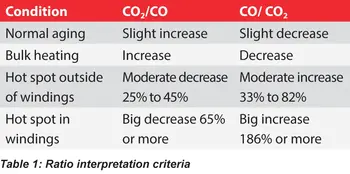
Advancements in Dissolved Gas Analysis: CO/CO2 Ratio
Advancements in Dissolved Gas Analysis CO CO2 Ratio optimize transformer diagnostics with machine learning, IEC 60599 interpretation, insulation aging assessment, fault detection, and predictive maintenance for condition monitoring of power transformers.
What Are Advancements in Dissolved Gas Analysis CO/CO2 Ratio for Transformer Diagnostics?
New methods refine CO/CO2 ratio interpretation using ML, online sensors, and IEC 60599 to assess paper aging.
✅ CO/CO2 thresholds aligned with IEC 60599 and IEEE C57.104
✅ Online DGA sensors and digital twins for real-time aging insights
✅ Machine learning models correlate ratios with DP and hot-spot temp
For DGA interpretation, faults identified using hydrocarbon gases are considered more serious if they appear to affect paper insulation. That is made explicit in CIGRE technical brochure 771 [1]. Production of hydrocarbon gases from the oil by electrical or thermal stress does not significantly affect the oil’s function as a coolant or electrical insulator. On the other hand, production of carbon oxide gases from paper insulation raises a concern of paper deterioration. In particular, charring of the paper by a localized hot spot, especially in the windings, can lead to transformer failure.
Recently R. Cox and C. Rutledge have developed a method for judging the location of a fault in paper insulation from the percent change of the CO2/CO carbon oxide gas ratio [2, 3]. In a controlled experiment with a sacrificial transformer and a heating element, they found that direct heating of paper tends to generate more CO than CO2. Case studies of faulty transformers have revealed that a large percent decrease in CO2/CO is associated with charring of winding paper. A moderate percent decrease in the ratio is often associated with paper charring outside of the windings, such as on bushing or tap changer leads. A minor percent decrease or an increase of the ratio (with production of carbon oxide gas) is usually associated with mild bulk overheating of paper insulation rather than a localized hot spot. See Table 1 for details. For readers new to the topic, an overview of dissolved gas analysis principles can clarify how gas ratios inform fault localization.
Complementary context on transformer oil analysis helps explain the baseline behavior of oils under electrical and thermal stress.
We propose on mathematical grounds that the CO/CO2 ratio should be used instead of CO2/CO. With the most serious problem – charring of winding insulation – the CO2/CO ratio approaches zero asymptotically, so that numerical and graphical resolution are worst when the problem is most severe. By contrast, charring of insulating paper causes the CO/CO2 ratio to increase, while decreases are associated with less damaging low temperature bulk overheating. (See Table 1.) The case history portrayed in Figure 1 shows two episodes where CO/CO2 increased sharply in parallel with methane before the transformer failed with extensive charring of winding insulation. When applying ratio-based criteria, attention to DGA data quality practices can reduce misinterpretation from sampling or instrument bias.
Recent industry work on advancements in dissolved gas analysis also discusses trends in ratio visualization relevant to severe paper charring.
This behavior of the carbon oxide gas ratio can generally be explained by chemical principles. Higher temperature and lower oxygen concentration favor the production of CO, while lower temperature and higher oxygen concentration favor CO2 production. The oxygen concentration in the windings tends to be lower than in the more freely circulating oil outside the windings, so a hot spot in the windings produces more CO than one outside the windings.
We conclude with some useful observations. First, stabilization of the gas ratio after a large change is not necessarily a good sign – it may signify that the paper near a hot spot has been consumed. Second, the criteria in Table 1 remain roughly valid even in the presence of gas loss. Since CO is lost to the atmosphere much faster than CO2, the CO/CO2 ratio can only increase if CO is truly being produced faster than CO2. Finally, some carbon oxide ratio changes are not fault related. For example, in transformers that have just been degassed and in transformers immediately after factory heat run testing, the gas ratio may change as gas trapped in oil-soaked paper insulation diffuses into relatively gas-free bulk oil. For context on heat removal and fluid flow, see transformer cooling considerations that influence temperature gradients.
Background on oil in transformers provides additional insight into oxygen availability and gas dissolution dynamics.
References
1. CIGRE TF D1.01/A2.11 and WG D1.32, Advances in DGA Interpretation, CIGRE Technical Brochure 771, July 2019.
2. C. Rutledge and R. Cox, “A comprehensive diagnostic evaluation of power transformers via dissolved gas analysis,” 2016 IEEE/PES Transmission and Distribution Conference and Exposition (T & D), Dallas, TX, 2016, pp. 1-5, doi: 10.1109/TDC.2016.7519996.
3. R. Cox, ‘“Categorizing Faults in Power Transformers via Dissolved Gas Analysis,” NETA World Journal, Spring 2020, pp. 64–68.
For extended reading, summaries of emerging analytical techniques offer broader context for interpreting field DGA patterns.
Related Articles
A review of the fundamental dielectric characteristics of ester-based dielectric liquids
Fundamental dielectric characteristics describe permittivity, dielectric constant, polarization, loss tangent, conductivity, and frequency response, guiding material selection, insulating performance, impedance behavior, and electric field interactions across applications in electronics, power systems, and RF design.
What Are Fundamental Dielectric Characteristics?
Material metrics like permittivity, loss tangent, and polarization that govern insulating behavior under electric fields
✅ Determines energy storage via permittivity and dielectric constant
✅ Quantifies dissipation with loss tangent and conductivity
✅ Captures frequency response, polarization, and dielectric breakdown
1. Introduction
For many years synthetic ester fluids were seen as specialist materials, only for use in unusual transformers, such as those in rolling stock, offshore installations and steel plants where fire safety was a prime consideration. However, in more recent times users are realizing that ester-based liquids could offer a more mainstream alternative to mineral oil and although these fluids are more expensive the overall project costs can be lower when taking into account factors such as reduced fire protection. In some space-constrained urban environments ester-based liquids may even become the preferred option, with the flammability and potential environmental impact of mineral oil making the design of modern installations extremely challenging. This type of situation has been seen with the latest 400kV projects incorporating synthetic ester fluids. For context, readers can review the fundamentals of dielectric fluids to understand how base chemistry influences flammability and environmental performance.
2. Standard AC Breakdown Testing
Standard test methods for assessing breakdown voltage of liquids typically employ small electrode gaps, of the order of ≤2.54mm. The electrode configuration can vary from spherical, through VDE type “mushroom” electrodes to disc electrodes. This type of testing is primarily used to give an evaluation of the cleanliness of a liquid since it gives very limited information about the actual dielectric performance. It can be seen by comparing the results in Table 1 that all the different types of liquids to be discussed in this paper give very similar results for a given electrode arrangement in this type of testing. Clarifying the definition of breakdown voltage in insulating oil helps interpret these short-gap results.
This could lead to the conclusion that all these liquids are equal in their dielectric performance, or that given a good result in the AC breakdown test one liquid is in some way superior to another. However, the true picture is more complex, since the electrical stress distribution is influenced by many factors such as electrode geometry, distance and materials types. Another key factor in the dielectric behavior is the wave shape of the applied voltage. AC voltage in the form of a clean sine wave is usually expected at frequencies of 50-60Hz depending on the geographical location. However, this is rarely the case with harmonics and other distortions of the pure waveform. In addition the prevalence of surges on the network must be accounted for; in testing this is usually characterized by two different types of event, either lightning surge or switching surge and there are standard waveforms established to test these.
In practice, understanding how oil in transformers behaves under distorted waveforms informs appropriate test selection.
So any dielectric system in a transformer must withstand AC conditions, switching impulse and lightning impulse, as well as chopped lightning impulse if this is specified. There may also be a requirement to withstand DC fields in some special cases and this adds an extra level of complexity.
When considering a new dielectric medium, therefore, all these aspects need to be tested and in the beginning researchers will look to comparisons with existing materials of known behavior to assess likely changes. As stated previously in terms of short gap AC behavior ester-based liquids are very similar to mineral oil and this gives some confidence that they can be used. For distribution class equipment up to 33kV the change to ester has required little in the way of detailed electrical design evaluation, since the electrical margins are large due to the need for excess solid insulation to provide mechanical strength. However as the voltage level rises there is less electrical margin and the need for routine impulse testing, both of which mean that greater steps are needed to evaluate design. So to begin using ester-based liquids in power class transformers there is a need to check impulse behavior over similarly short gaps to the AC tests, and this is where see some differences start to emerge.
Complementary programs of transformer oil analysis can track moisture, particles, and aging markers that strongly influence PD and impulse withstand.
3. Impulse Strength of Short Electrode Gaps
There are standard methods for measuring impulse breakdown with the ASTM D3300 being one popular method. The electrode arrangement for this test can be either needle to sphere, or sphere to sphere. In the first instance researchers started work with small electrode gaps employing a sphere-sphere set up, such as the example in Fig 1. utilized by the University of Manchester.
Fig.1. Arrangement for short gap impulse tests
In their testing, a number of different methods were applied for stepping up the test voltage, following the recommendations in different standards. This showed a lower impulse breakdown strength for the ester liquids and Fig 2. shows a summary of the results, with the maximum difference in breakdown voltage being of the order of 20%. In this case the mineral oil tested was Nynas Nytro Gemini X, the synthetic ester M&I Materials MIDEL 7131 and natural ester Cargill Envirotemp FR3. These observations are consistent with broader properties of transformer insulating oil related to ionization, space charge, and pre-breakdown dynamics.
Fig. 2. Results of impulse breakdown testing to various methods
4. Partial Discharge Inception
To further understand the mechanism behind the different behavior that was observed, researchers started looking at very divergent arrangements, for example a sharp needle of tip radius 6.5µm and sphere of radius 12.5mm, as this allows observation of phenomena in a liquid with manageable voltage levels.[3] This allowed the study of partial discharge inception, when the liquid begins to yield to the electrical field. When the researchers subjected this arrangement to AC they discovered that the PDIV of ester-based liquids with a gap of 50mm is actually very close to that of mineral oil.
In fact in the case of natural ester a higher PDIV was found than in mineral oil. This suggested that the reason for the difference in impulse breakdown behavior does not lie in discharge inception, although some different behavior was found in this study, especially in polarity, between mineral oil and esters. Mineral oil exhibits a very strong tendency to PD only in the positive half cycle of the AC waveform, i.e. when the needle is at a positive polarity. In the negative half cycle the required voltage to form PD is much higher than that of the PDIV. In the ester-based liquids the situation is somewhat different; PD was found in the negative half cycle at much closer voltages to the positive half cycle PDIV, as shown Fig. 3.
Fig. 3. PDIV in positive (left hand chart) and negative (right hand chart) half cycles
This indicated that the electrical behavior is not the same between the liquid types. It also throws up questions around the way mineral oil filled transformers are tested, i.e. is only testing with negative impulse a valid practice?
5. Streamer Propagation Behavior
The similarity in PDIV between esters and mineral oil required a closer look at propagation of electrical discharges. The next important step was then to look at the discharge channels in the liquids, known as streamers. This involved the combined techniques of electric measurement and visual imaging to detect how streamers form in liquids and how they propagate. Much of this work was conducted in parallel in different research institutions,where the same conclusion was drawn. Streamer propagation in esters is different to mineral oil, especially under very divergent fields, such as those the researchers were using. The key conclusion from this was a difference in so-called acceleration voltage when streamers move from slow mode propagation to fast mode.
In order for a flashover to occur it is necessary for the electrical current to find a path from one electrode to another and in liquids this occurs within a gaseous channel, known as a streamer. This channel will only propagate through the fluid if it has sufficient field strength to provide motive force and sufficient time. When considering AC behavior the time is relatively long, whereas under impulse conditions the time is extremely short. The standard wave shape for lightning impulse has a rise time of 1.2µs and fall time of 50µs to reach 50% of maximum. This means that the peak electrical field is only present for a matter of micro-seconds and in order to get propagation from one electrode to another, especially over longer oil gaps, the discharge must attain a high velocity. Streamers can be characterized by four different modes, as shown in Fig. 4.
Fig. 4. Streamer velocities and modes
The principle behind the connection between streamer mode and breakdown can be demonstrated with a simplified example. Taking a gap size of 50mm, if it is assumed that the liquid is only subjected to the voltage necessary to sustain propagation for 5µs then the streamer will need to attain a velocity of 10km/s or in other words be of Mode 3-4 to bridge the gap and cause a breakdown. Otherwise the streamer will only be characterised as a partial discharge. The transition from Mode 1/2 to Mode 3/4 can be characterised as the acceleration voltage.
A variety of researchers have looked at the acceleration voltage principle with esters and all agree that this is one area where these liquids differ from mineral oil. The charts in Fig. 5. show the behavior when the electrode system is extremely divergent, with esters having a substantially lower acceleration voltage than mineral oil, especially under positive polarity.
Fig. 5. Acceleration voltage under Positive polarity and Negative polarity at 50mm spacing
6. Testing with More Realistic Electrode Arrangements
Although this difference in acceleration voltage would appear to prevent the use of esters at higher voltages as the electrode arrangement becomes less divergent, inception begins to become more important for the withstand level. This supports the findings of researchers who have studied the behavior with varying levels of divergence in the electrodes, from homogenous through to highly divergent.
When thinking about the design of real world equipment and transformers for transmission levels, the more homogeneous case actually represents the majority of the configurations to be considered. Needle to plate type situations are avoided as part of good design and manufacturing, as it is known that these are electrically weak and prone to producing discharges. Consequently, criteria for selecting oil for transformers should consider field uniformity, surge exposure, and insulation geometry as well as fire safety.
Research looking at impulse behavior under more realistic arrangements has focussed on tap changer contacts, since these represent a more divergent part of power transformer designs. In this case the arrangement shown in Fig. 6. was used and the results obtained under impulse conditions showed very little difference between ester and mineral oil.
Fig. 6. Tap changer contacts used for natural ester evaluation
Fig. 7. shows the Weibull distribution for results obtained in this arrangement. This gives some confidence that even though the situation with a needle and plate looks unfavourable, as soon as the configuration starts to reflect the real world situation, the difference between esters and mineral oil becomes much smaller.
Fig. 7. Weibull distribution of lightning impulse breakdown under positive polarity
7. Laboratory Testing of Creepage Discharge and Flashover
Another area where divergence becomes important is over long creepage paths, where there is effectively a concentrated area of electrical field at one end, with a very long distance to the lower potential. A popular form of arrangement for testing creepage behavior is the so-called Weidmann set up, of a paper-wrapped or bare conductor in contact with a pressboard barrier, as shown in Fig 8.
Fig. 8. Weidmann electrode arrangement
When this type of arrangement has been tested over gap sizes up to 35mm it has been found that esters give similar flashover results to mineral oil, as shown in Table 3. The difference between the liquids in this arrangement is small - not even as large as that found in small oil gaps. This suggests that even though design modification may be necessary, there is not the very large difference that might be assumed if the acceleration voltage in extremely divergent set up was used.
8. Testing in Prototype Transformers
Another area where more focus may be required with an ester based liquid is over very long creepage paths far beyond the distances tested with the Weidmann arrangement, since the fundamental investigations indicate that propagation is key. Experience from real transformer prototypes has shown that failure modes over extremely long paths support the faster propagation model. Researchers from Brazil found that when testing a single phase 245kV prototype transformer, in natural ester, designed to mineral oil rules, the natural ester failed at 100% of Basic Insulation Level (BIL) rating, when tested with lightning impulse along a long gap discharge path, as shown in Fig.
3. This unit had an HV winding with a center connection coil.
Fig. 9. Model of winding showing discharge path
The designers of this transformer noted that although they experienced this failure it does not prevent the use of esters at higher voltage. However, there may need to be more design margin and closer attention paid to peak stress areas and long creepage paths. Thermal design and transformer cooling also affect viscosity and bubble formation, which in turn impact dielectric margins at high stress.
This is a theme that is often mentioned in the industry when discussing ester-based liquids and the necessary design changes. It is important to note that a growing number of manufacturers have carried out their own research in addition to the published works; to date there are a number of transformers successfully operating at 400kV+ with esters. There are also many other projects in development, and the expectation is that in the coming years esters will move from a being a product used in niche applications to one deployed in mainstream installations.
9. Conclusions
Over the last fifteen years a great deal of research has been conducted into understanding the electrical behavior of ester-based liquids, under a range of different conditions. This has been driven by a desire for safer, more environmentally friendly transformers.
The laboratory based test arrangements with extremely divergent fields indicate a difference in the streamer propagation behavior between esters and mineral oil, which may mean designers need to pay attention to certain portions of the dielectric structure. Evaluations with more realistic electrode arrangements indicate that although there is a difference in behavior, this will not prevent the use of esters at higher voltages. The experience in real world applications, where esters are now utilized for power transformers for 400kV+ also supports this assertion.
The key aspects for designers when considering ester-based liquids are to design a discharge-free transformer; extra margin may be needed over long creepage paths and in divergent arrangements to compensate for the higher probability of propagation. This could be summarized by saying that with mineral oil, discharges may occur, without flashover, but in ester there is a higher probability of discharge becoming breakdown.
Related Articles

Transformer Oil Analysis Explained
Transformer oil analysis evaluates dielectric strength, moisture, acidity, interfacial tension, and dissolved gases in insulating oil. It ensures transformer reliability, detects faults, prevents failures, and supports predictive maintenance in power distribution.
What is Transformer Oil Analysis?
Transformer oil analysis is a diagnostic process that tests insulating oil for moisture, acidity, and gases to monitor the condition of transformers, improve reliability, and prevent failures.
✅ Identifies dielectric strength, moisture, acidity, and interfacial tension levels
✅ Detects dissolved gases that signal faults, overheating, or arcing
✅ Supports predictive maintenance and ensures compliance with IEEE and IEC standards
This form of testing is a cornerstone of preventative maintenance for electrical engineering and maintenance professionals. Ensuring the optimal condition of insulating fluids is essential for the reliable and efficient operation of high-voltage equipment. Degraded oil reduces efficiency, accelerates insulation aging, and increases the risk of failures. Regular analysis enables the early detection of potential issues, allowing for timely corrective actions that extend transformer life and ensure an uninterrupted power supply. For utility transformers, where downtime can disrupt entire networks, ongoing transformer oil analysis is as critical as proper transformer oil filling.
Electrical Transformer Maintenance Training
Substation Maintenance Training
Request a Free Training Quotation
Transformer oil testing plays a crucial role in ensuring the health of equipment. It ensures that insulating liquids continue to provide cooling and insulation while preventing dielectric failure. With modern grids demanding greater reliability, oil analysis combined with condition monitoring has become a strategic tool for utilities and industries. Recognized standards, such as IEEE C57.104, IEC 60599, and ASTM methods, guide testing procedures, the interpretation of results, and recommended corrective actions. In modern systems, condition monitoring works in tandem with oil testing to detect early signs of faults and extend the lifespan of transformers.
Dissolved Gas Analysis
Dissolved gas analysis (DGA) is the most widely used diagnostic test for assessing the condition of electrical equipment. By identifying gases such as hydrogen, methane, ethylene, and acetylene dissolved in the fluid, engineers can detect thermal faults, arcing, or overheating long before physical symptoms appear. For example, acetylene may indicate high-energy arcing, while elevated hydrogen levels often signal partial discharge. By comparing gas concentrations against IEEE and IEC thresholds, operators can implement corrective actions before problems escalate. Because distribution transformers play a critical role in voltage delivery, routine DGA ensures reliable service to residential, commercial, and industrial customers. The role of distribution transformers necessitates regular analysis to ensure stable voltage delivery to residential, commercial, and industrial users.
Moisture Content
Moisture is one of the leading causes of reduced dielectric strength. Even small amounts of water in insulating fluids increase the risk of flashover and accelerate the degradation of paper insulation. Regular testing identifies water contamination early, allowing timely fluid treatment or replacement. Moisture analysis not only protects winding insulation but also provides valuable insight into transformer loading, breathing, and sealing conditions. For professionals studying transformer design, moisture control illustrates the importance of oil’s dual role as coolant and insulator. For engineers studying the construction of a transformer, oil analysis provides practical insight into how insulating fluids preserve coil integrity and cooling efficiency.
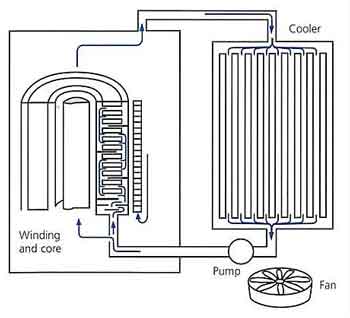
Dielectric Breakdown Voltage Testing
The dielectric breakdown voltage (BDV) test measures the maximum voltage oil can withstand before electrical breakdown occurs. This simple yet powerful test determines whether oil continues to provide adequate insulation under stress. Results guide maintenance decisions such as filtration, degassing, or replacement. When combined with advanced diagnostics, such as hydrogen detection or DGA, BDV testing provides a comprehensive picture of equipment readiness for demanding operating conditions. Advanced diagnostics, such as dissolved gas analysis, can complement specialized equipment like a hydrogen detection system, safeguarding against internal faults.
Acid Number
Acid number testing (also known as neutralization number) monitors the buildup of acidic compounds formed as oil oxidizes over time. High acid levels corrode metals, degrade insulation, and contribute to the formation of sludge, which reduces cooling efficiency. Tracking the acid number enables predictive maintenance planning and helps operators avoid accelerated transformer aging. In combination with furan analysis, acid testing provides a strong indicator of overall fluid degradation and the health of solid insulation. Understanding how oil testing supports the operation of high-voltage transformers highlights its importance in maintaining safe insulation and efficient energy transfer.
Comparison Table
| Aspect / Focus | Transformer Oil Analysis | Condition Monitoring | Hydrogen Detection System |
|---|---|---|---|
| Purpose | Evaluates insulating oil quality: moisture, acidity, dissolved gases, dielectric strength | Tracks overall transformer performance, detecting faults early | Detects hydrogen gas buildup from overheating or arcing |
| Key Parameters | Moisture, acid number, dissolved gas levels, dielectric breakdown voltage | Temperature, vibration, oil quality, load fluctuations | Hydrogen ppm levels in oil or the surrounding environment |
| Reliability Impact | Prevents insulation failure, extends transformer lifespan | Reduces unplanned outages, predicts maintenance needs | Prevents catastrophic failures and downtime |
| Maintenance Role | Guides oil treatment, replacement, or corrective action | Provides system-wide health insights for proactive maintenance | Enables fast response to internal transformer faults |
Interfacial tension (IFT)
Interfacial tension (IFT) testing, although less frequently discussed, is equally critical in evaluating quality. IFT measures the ability of an insulating fluid to separate from water. As fluid ages and becomes contaminated with byproducts of degradation, its interfacial tension decreases, indicating a loss in purity and efficiency. Ensuring high IFT values is essential for maintaining the insulating liquid's protective qualities and overall system performance.
Advanced Testing
Beyond standard tests, advanced diagnostics offer deeper insight. Furan testing detects cellulose breakdown, a key indicator of insulation aging. Power factor testing measures dielectric losses and reveals any deterioration in oil or insulation. Flash point testing evaluates fire safety by determining an oil’s resistance to ignition. Together, these tests provide a comprehensive health assessment, helping utilities maintain reliability, meet compliance requirements, and reduce lifecycle costs.
Routine transformer testing not only identifies immediate problems but also builds a historical database that improves long-term decision-making. Utilities, industrial plants, and service providers rely on these results to optimize maintenance schedules, extend equipment life, and improve grid stability.
Dielectric Fluid
Dielectric fluid examination also focuses on physical properties, such as flash point, which indicates the fluid's flammability and safety under operational conditions. A higher flash point denotes better thermal stability, ensuring the insulating liquid remains effective even in demanding environments. These parameters collectively highlight the importance of transformer oil testing and its role in safeguarding electrical systems. Maintaining the insulating fluid is just as vital as selecting the right dielectric fluid, since purity and dielectric strength directly affect operational safety.
Routine analysis not only identifies existing problems but also prevents potential failures, enabling a longer lifespan for critical assets. Electrical utilities and industries rely on these insights to maintain an uninterrupted power supply and reduce operational costs. By focusing on key themes such as dissolved gas analysis, moisture content, and acid number, this kind of analysis remains indispensable in modern power system management.
Frequently Asked Questions
What tests are done on a transformer?
Transformer oil is tested for moisture, acid number, dielectric breakdown voltage, and gases. Advanced methods include interfacial tension, furan testing, and power factor testing. Together, these tests provide a complete profile of insulation and oil condition.
How do you do oil analysis?
Oil analysis begins with proper sampling, followed by laboratory tests that utilize IEEE, IEC, and ASTM standards. Common tests include DGA, BDV, moisture, and acidity. Results are compared to benchmarks to detect issues and guide corrective maintenance.
How much does transformer oil sampling cost?
Costs vary by scope and provider. Basic testing (DGA, moisture, BDV) ranges from $200 to $500 per sample. Comprehensive packages with furan or advanced diagnostics may exceed $1,000. Despite costs, regular testing prevents failures and reduces long-term expenses.
How can the health of transformer oil be checked?
The health of insulating fluids is checked through routine tests, including DGA, BDV, moisture, acid number, and IFT. Advanced diagnostics and visual inspections supplement these methods, ensuring safe operation and extending service life.
Related Articles
Dielectric Fluids News
Dielectric Fluids Media
Dielectric Fluids Articles From ET Magazine
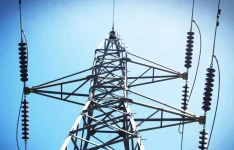
FERC Complaint Targets Duke, PJM Transmission Planning
A coalition of large energy consumers and ratepayer advocates has filed a complaint with the Federal Energy Regulatory Commission (FERC), urging the agency to prohibit transmission owners from independently planning "local" transmission projects exceeding 100 kilovolts (kV). The coalition argues that such local planning, lacking independent oversight, leads to inefficient and costly transmission development, resulting in unjust and unreasonable rates for consumers.
Background
Transmission planning involves determining the necessary infrastructure to transport electricity from generation sources to consumers. In the United States, this planning is typically conducted by transmission owners, which are often investor-owned utilities. These entities are responsible for identifying and implementing transmission projects to meet local reliability needs. However, the coalition contends that this approach can result in projects that are not cost-effective and may not represent the most efficient solutions for consumers.
The Complaint
The coalition's complaint highlights several concerns:
-
Lack of Independent Review: Local transmission projects often undergo minimal independent scrutiny, leading to potential inefficiencies and higher costs.
-
Incentives for Overinvestment: Transmission owners may be motivated to invest in local projects due to the absence of competitive bidding and the limited review provided by FERC's formula rate process.
-
Regional Planning Deficiencies: The current regulatory framework allows local planning exceptions to override regional planning rules, hindering the development of more efficient regional solutions.
The coalition proposes that FERC mandate regional planning conducted by an independent transmission system planner to ensure that transmission projects are both appropriate and beneficial to consumers. They suggest that regional transmission organizations and independent system operators could serve as independent transmission planners if they meet specific criteria.
Industry Response
Larry Gasteiger, executive director of WIRES—a transmission sector advocacy group—expressed concerns about the potential impact of the complaint. He stated that the complaint could burden FERC and all transmission developers with unnecessary and inefficient new processes, diverting resources from ongoing regional transmission planning and compliance with existing FERC orders.
Regulatory Context
This complaint follows recent developments in transmission planning and oversight:
-
FERC's Order 1920-A: In November 2024, FERC revised its Order 1920 on transmission planning and cost allocation to grant state utility regulators a larger role in the decision-making process. The revised rule requires transmission providers to include state input on the development of future scenarios used in long-term regional transmission planning.
-
FERC's Rejection of PJM's Proposal: In December 2024, FERC rejected proposals that would have given PJM Interconnection transmission owners more control over the grid operator’s transmission planning process. The commission expressed concerns about the potential for undue influence by a single stakeholder group, specifically the PJM transmission owners, over transmission planning and expansion.
Implications
The coalition's complaint underscores ongoing debates about the effectiveness and fairness of transmission planning processes. Proponents of independent planning argue that it can lead to more efficient and cost-effective transmission solutions, ultimately benefiting consumers. Opponents, however, caution that such changes could introduce new complexities and delays into the transmission development process.
As FERC reviews the complaint, stakeholders across the energy sector will be closely monitoring the potential implications for transmission planning and the broader regulatory landscape.

RWE Expands Its Footprint with 450 MW of Battery Energy Storage in Texas
In a significant move for the renewable energy landscape, RWE, a leading global energy company, has announced the addition of 450 megawatts (MW) of battery energy storage capacity in Texas. This expansion underscores the growing importance of energy storage solutions in enhancing grid reliability and supporting the integration of renewable energy sources. As the demand for clean energy continues to rise, RWE's investment reflects a broader trend in the energy sector toward more resilient and flexible systems.
The Role of Battery Energy Storage
Battery energy storage systems (BESS) play a critical role in modernizing the electrical grid. They offer several advantages, including the ability to store excess energy generated from renewable sources like solar and wind for later use. This capability helps balance supply and demand, especially during peak consumption periods when renewable generation may be insufficient.
In Texas, where the energy landscape is increasingly dominated by renewables, the need for robust energy storage solutions has never been more crucial. The state has experienced significant growth in wind and solar energy installations, yet the intermittent nature of these sources presents challenges. Battery storage systems can help mitigate these challenges by providing backup power, enhancing grid stability, and enabling more efficient energy management.
RWE's Strategic Investment
RWE's new battery storage facility in Texas is part of its broader strategy to expand its renewable energy portfolio and enhance energy security in the region. The company aims to invest significantly in renewable energy and storage technologies, recognizing their essential role in achieving global climate goals and facilitating the transition to a sustainable energy future.
The 450 MW battery storage capacity is expected to provide vital grid services, including frequency regulation and load shifting. By storing energy during periods of low demand and discharging it during peak times, the facility will help stabilize the grid and reduce reliance on fossil fuel-powered generation.
RWE’s investment aligns with Texas’ ambitious energy goals, particularly in promoting renewable energy. The state has set a target of achieving 20,000 MW of battery storage capacity by 2030, which represents a critical step in integrating more renewable energy into the grid. RWE’s contribution will be a valuable asset in helping Texas reach these targets.
Benefits for the Texas Energy Market
The addition of 450 MW of battery storage capacity is poised to have several positive impacts on the Texas energy market:
-
Enhanced Grid Reliability: The new facility will provide crucial support to the grid, ensuring that energy supply remains stable even as renewable energy sources fluctuate. This reliability is especially important during peak demand periods, such as extreme weather events.
-
Increased Renewable Integration: By enabling more efficient use of renewable energy, the battery storage system will help reduce the reliance on fossil fuels. This is critical for Texas, which aims to lower greenhouse gas emissions and transition toward a cleaner energy mix.
-
Economic Growth: RWE’s investment in battery storage represents a significant capital infusion into the Texas economy. This project is expected to create jobs during the construction phase and in ongoing operations and maintenance, contributing to local economic development.
-
Market Flexibility: With the ability to store energy for later use, battery storage systems enhance the flexibility of the energy market. This flexibility allows for better management of energy resources and can lead to more competitive pricing for consumers.
Challenges Ahead
Despite the promising benefits, the deployment of battery energy storage systems is not without challenges. Issues such as supply chain constraints for battery materials, regulatory hurdles, and the need for supportive policies can impact the pace of development.
Additionally, as the demand for battery storage grows, ensuring the sustainability of battery production and recycling will be crucial. The industry must focus on developing environmentally friendly practices to mitigate any negative impacts associated with increased battery use.
Conclusion
RWE’s addition of 450 MW of battery energy storage in Texas marks a significant step forward in the ongoing transition to a more resilient and sustainable energy system. By investing in energy storage solutions, RWE is not only enhancing grid reliability but also supporting the broader integration of renewable energy sources in a state that is rapidly evolving its energy landscape.
As the world moves towards a greener future, investments like RWE’s will be essential in meeting the challenges of energy supply and demand. The success of such projects will demonstrate the vital role that battery storage can play in shaping a sustainable energy future, benefiting consumers, the economy, and the environment.

Digital Twins for Substations: Bridging the Physical and Digital Worlds
In the rapidly evolving landscape of power grid management, digital twin technology is emerging as a game-changer for substations. By creating virtual replicas of physical assets, digital twins bridge the gap between the physical and digital worlds, enabling enhanced operational efficiency and asset management. This article examines the application of digital twin technology in substations, its benefits for real-time monitoring, scenario analysis, and predictive maintenance, integration with grid management systems and IoT devices, and examples of successful implementations and their impact on substation performance.
Discover how modern substations are evolving through virtualization, process bus systems, and advanced cybersecurity in our digital substation feature article.
Overview of Digital Twin Technology and Its Application in Substations
A digital twin is a dynamic, virtual model of a physical asset, system, or process that mirrors its real-time status, operation, and performance. In the context of substations, digital twins replicate components such as transformers, circuit breakers, and control systems. These virtual models are continuously updated with data from sensors, IoT devices, and other sources, providing a comprehensive and dynamic view of the physical infrastructure. Accurate modeling is only possible with integrated substation automation systems that track real-time operational data.
Digital twin technology allows utilities to simulate, analyze, and optimize substation operations. It provides a detailed and real-time representation of the substation’s performance, enabling operators to monitor equipment health, predict potential issues, and evaluate different scenarios to improve decision-making and operational efficiency. The design phase is critical, and effective electrical substation design supports digital twin integration.
Benefits of Using Digital Twins for Real-Time Monitoring, Scenario Analysis, and Predictive Maintenance
Real-Time Monitoring
Digital twins offer real-time visibility into the performance and condition of substation assets. By continuously collecting and analyzing data, digital twins enable utilities to monitor key parameters such as voltage, current, temperature, and load. This real-time insight helps identify anomalies and potential failures before they escalate, allowing for timely intervention and minimizing downtime. To ensure accuracy over time, a digital twin must be continually updated through reliable electrical substation maintenance practices.
Scenario Analysis
Digital twins enable utilities to perform scenario analysis by simulating different operational conditions and assessing their impact on substation performance. This capability is invaluable for planning and decision-making, as it allows utilities to evaluate the effects of load changes, equipment upgrades, and environmental factors. Scenario analysis helps utilities develop robust strategies for grid optimization, emergency response, and future investments.
Predictive Maintenance
One of the most significant advantages of digital twins is their ability to facilitate predictive maintenance. By analyzing historical and real-time data, digital twins can identify patterns and trends that indicate potential issues. This predictive capability allows utilities to schedule maintenance activities proactively, reducing the likelihood of unexpected failures and extending the lifespan of substation assets. Predictive maintenance also optimizes resource allocation and reduces maintenance costs.
Integration with Grid Management Systems and IoT Devices
The integration of digital twins with existing grid management systems and Internet of Things (IoT) devices is essential for maximizing their benefits. Digital twins complement grid management systems by providing a more detailed and dynamic view of substation infrastructure. While traditional systems offer real-time monitoring and control, digital twins enhance these capabilities with advanced analytics, simulation, and predictive insights.
Understanding the inner workings of electrical substation components allows engineers to replicate them digitally with precision.
You can also visit our Substation Maintenance training course.
Visit our Electricity Forum Electrical Substation Channel Page.
Read full article at Intelligent Transformers & Substations Special Edition

The End of the Road for Transmission Incentives
In a significant shift, the Federal Energy Regulatory Commission (FERC) has decided to abandon its transmission incentives policy, particularly the construction work in progress (CWIP) incentives. This decision marks a pivotal change in how transmission projects are financed and regulated, potentially impacting stakeholders across the energy sector.
Historically, transmission incentives, including CWIP, were designed to encourage investment in the nation's aging and overburdened transmission infrastructure. By allowing utilities to recover costs during the construction phase, FERC aimed to reduce the financial risk associated with large-scale transmission projects. The incentives were intended to stimulate the necessary upgrades and expansions to maintain grid reliability and integrate renewable energy sources.
However, recent developments have led FERC to reconsider the effectiveness and necessity of these incentives. A prominent case in point is the abandonment of transmission incentives for PSEG’s transmission project within the PJM Interconnection region. This decision underscores a broader reassessment of the incentive structures that have been in place for years.
The Rationale Behind the Decision
FERC’s decision to abandon the CWIP incentive policy reflects growing concerns about the effectiveness and fairness of such incentives. Critics argue that these incentives can lead to inflated costs and financial imprudence, as utilities might have less incentive to control costs or optimize project efficiencies. Moreover, there is a concern that CWIP incentives contribute to higher electricity rates for consumers, as the costs of these projects are often passed on to them.
The decision also aligns with a broader regulatory trend towards increasing scrutiny and accountability in utility investments. There is a push for a more performance-based approach where incentives are tied directly to outcomes such as reliability improvements and cost-effectiveness, rather than simply reducing the financial risk of project development.
Implications for Stakeholders
The abandonment of CWIP incentives will have several implications for various stakeholders in the energy sector:
-
Utilities: For utilities, particularly those that were planning significant transmission investments relying on CWIP incentives, this change introduces uncertainty. They will need to reassess their investment strategies and possibly seek alternative financing mechanisms. The shift could potentially lead to delays in transmission projects as utilities adjust to the new regulatory environment.
-
Investors: Investors in utility infrastructure projects might face increased risks and potentially lower returns. The absence of CWIP incentives could make transmission projects less attractive, affecting investment flows in the sector. This shift could also lead to increased scrutiny on the cost management and operational efficiency of transmission projects.
-
Consumers: On the consumer side, the removal of CWIP incentives could have mixed effects. While it might help avoid cost overruns and inefficiencies that could lead to higher electricity prices, it could also slow down necessary infrastructure improvements. This delay might affect grid reliability and the integration of renewable energy sources, potentially impacting electricity prices and sustainability goals in the long term.
-
Regulatory Bodies: The decision reflects a broader regulatory trend towards performance-based incentives and increased scrutiny. Other regulatory bodies and jurisdictions might follow FERC’s lead, leading to a reevaluation of incentive structures across the energy sector. This could result in a more rigorous assessment of how incentives align with broader energy policy goals, such as enhancing grid reliability and supporting clean energy transitions.
Future Outlook
Looking ahead, the energy sector will need to adapt to this regulatory shift. The focus will likely move towards developing new mechanisms to support transmission investments while ensuring cost-effectiveness and reliability. Performance-based incentives and innovative financing structures might emerge as alternatives to CWIP incentives.
Furthermore, the transition away from CWIP incentives presents an opportunity for stakeholders to explore more sustainable and efficient approaches to transmission infrastructure development. Enhanced transparency, cost control measures, and outcome-based incentives could play a crucial role in shaping the future of transmission investments.
In summary, FERC's abandonment of CWIP transmission incentives marks a significant regulatory shift with broad implications for utilities, investors, and consumers. As the energy sector adjusts to this change, the focus will likely be on finding new ways to balance investment encouragement with cost management and operational efficiency.
Sign Up for Electricity Forum’s Dielectric Fluids Newsletter
Stay informed with our FREE Dielectric Fluids Newsletter — get the latest news, breakthrough technologies, and expert insights, delivered straight to your inbox.
Electricity Today T&D Magazine Subscribe for FREE

- Timely insights from industry experts
- Practical solutions T&D engineers
- Free access to every issue












